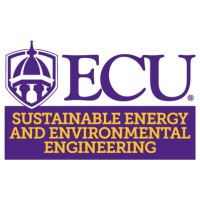Assessment Recommendations/Best Practices for Improving Energy Efficiency/Reducing Carbon Footprint in Manufacturing Facilities
Feb 22, 2022 11:00AM
Location
Online
Categories Non NCSEA Event
Topics Building Performance, construction, Energy Efficiency, Waste Management

The purpose of this presentation is to give an overview of some of the best practices to implement in manufacturing facilities towards improving energy efficiency, improving productivity, and managing waste. The presentation will cover many aspects where these practices can be implemented in HVAC systems, boilers, chillers, compressed air systems, waste heat recovery systems, renewable energy utilization, and in on-site generation among others. The presentation should be of interest to operators, engineers, and managers of manufacturing facilities.
Speaker:
Dr. S.A. Sherif is Professor of Mechanical and Aerospace Engineering and Director of both the Industrial Assessment Center (UF-IAC) and Mobile Energy Laboratory (UF-MEL) at the University of Florida. He also served as Co-Director of the Southeastern Center for Industrial Energy Intensity Reduction (SECIEIR) at the University of Florida (2009-2013). He is a Life Fellow of ASME, a Life Fellow of ASHRAE, a Fellow of the Royal Aeronautical Society, an Associate Fellow of AIAA, a Vice President of Commission B-2 on Refrigerating Equipment of the International Institute of Refrigeration, a Member of the Advisory Board of Directors of the International Association for Hydrogen Energy, a Founding Member of the Board of Directors of the American Society of Thermal and Fluids Engineers (ASTFE), and Head of the Refrigeration Section of ASHRAE (2004-2008). Dr. Sherif currently serves as Editor-in-Chief of the ASME Journal of Solar Energy Engineering. He also served as Editor-in-Chief of the ASME Journal of Thermal Science and Engineering Applications (2014-2019). He is on the editorial boards of 22 other thermal science journals. Dr. Sherif has more than 300 refereed papers, one book, 20 bound volumes, 24 book chapters, 200 technical reports, and two US patents.

